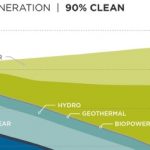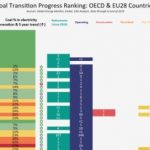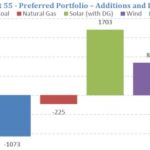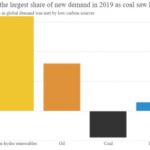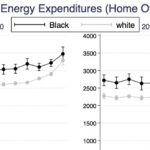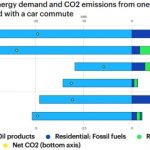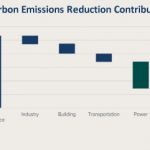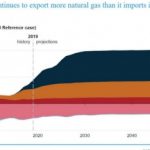Traditional monopolistic and oligopolistic gas markets artificially keep gas prices high, work against competition and efficiency, and have no place in the modern world, say Jean-Baptiste Dubreuil, Gergely Molnar and Songho Jeon at the IEA. They calculate that gas market reforms in the EU, begun in the mid 1990s, saved the bloc $15bn in 2019. But it typically takes 20 years for such a market to be properly established. The authors explain that … [Read more...]
“Vertical well” Pumped-Storage Hydro: small, cheaper, 1-to-100MW range
In the U.S., pumped-storage hydropower (PSH) already provides 95% of all utility-scale energy storage. So any innovations that cut costs or extend PSH usability should be well received. The National Renewable Energy Laboratory (NREL) and its partners Obermeyer Hydro, Microtunneling Inc. and Small Hydro Consulting are demonstrating the advantages of a small pump installed in a vertical “well” rather than an underground powerhouse, one of the most … [Read more...]
E-Trucks need infrastructure, not just cheaper batteries
The electrification of road freight has great potential, but there are some big gaps that first have to be bridged. Writing for IRENA, Dolf Gielen, Francisco Boshell, Guy Lentz and Sita Holtslag explain what needs to be done to ensure that the technological advances and cost reductions happening at the forefront of e-mobility are quickly delivered onto our roads. To illustrate the problem: in Europe over half of road freight is transported less … [Read more...]
Zero U.S. power sector emissions by 2035, says Biden. How?
Joe Biden, the Democratic presidential hopeful, wants to reduce U.S. power sector emissions to zero by 2035. That’s more ambitious than Obama, and more than what Biden promised when campaigning to be the Democrat’s candidate. His emphasis has been on the jobs and investment a green economy will create – language that has more voter appeal than reversing emissions. Meredith Fowlie at UC Berkeley’s Energy Institute at Haas reviews the promises … [Read more...]
Global Coal Database: Covid lockdown may accelerate phase-out
E3G has created a database to track coal’s phase-out across the globe. Though much has been achieved, dating back to 2010, it’s still not on target. Chris Littlecott and Leo Roberts at E3G look at the data from different territories. The OECD and EU28 have made very good progress: 71% of these countries are pursuing coal phase-out, with 58% on track to be coal free by 2030. The article points at successes in the US, the UK, Spain and Germany … [Read more...]
New U.S. climate bill is unprecedented in “ambition, concrete details, and urgency”
Mark Silberg, Alisa Petersen and Ben Holland at RMI pick out six highlights from a new U.S. climate bill and accompanying report that they describe as unprecedented in “ambition, concrete details, and urgency”. The Democrat-sponsored “Moving Forward Act” passed the House at the start of July and now goes to the Senate. Though regional commitments already get the U.S. halfway to meeting the 1.5°C goal, federal action is needed for the rest. … [Read more...]
Three U.S. utilities to skip the gas “bridge”, move straight from coal to renewables
At the end of June, utilities in three U.S. states declared they are closing down coal plants and moving straight to renewables, without building new gas plants as a “bridge” fuel. For example, to replace lost coal capacity, Tucson Electric Power in Arizona will add 2,457MW of new wind and solar generation, backed up with 1,400MW of battery storage. Similar commitments are being made by other utilities in Colorado and Florida. New Mexico is … [Read more...]
BP’s world energy review: 2019 saw clean electricity match coal
Simon Evans at Carbon Brief summarises BP’s 69th edition of its influential annual statistical review of world energy, looking at 2019. Overall, total energy demand rose, though slower than usual. Renewables were the largest source of new energy, but were closely followed by oil and gas. Coal use dropped again, the fourth drop in six years, thanks to historic declines in the EU and the US. But continued growth in SE Asia, China and India leaves … [Read more...]
Russia and U.S. are backing next generation Nuclear
Russia’s Rosatom is positioning itself to lead research and testing for Generation IV fast neutron reactors, including high temperature gas-cooled, molten salt, and lead-bismuth designs. Following an update of plans released by Rosatom in June, Dan Yurman fills in the details. It is creating an International Research Centre and has signed up four partnering nations so far – the Czech Republic, Hungary, Poland, and Slovakia. The R&D facility … [Read more...]
German Geothermal: from 1.2TWh to 100TWh by 2050?
The IEA’s Sustainable Development Scenario sees the world's geothermal power generation tripling to almost 300 TWh by 2030. That’s because there’s an almost unlimited supply that can provide power, heating and cooling. It’s also a continuous supply uninterrupted by the weather, unlike solar and wind. The plants are small and quiet. For heating, ground-source heat pumps use significantly less electricity than other technologies. Writing for CLEW, … [Read more...]
Do black households in the U.S. pay more for their energy?
The “Black Lives Matter” movement, sparked by the killing of George Floyd by Minneapolis police at the end of May, has reverberated around the world. Particularly in North America and Europe it has gone well beyond the behaviour of the police and prompted calls to identify and root out structural racism wherever it is found. Maximilian Auffhammer at the Energy Institute at Haas looks at U.S. research that asks: “Do black households spend more on … [Read more...]
Calculating the energy saved if home working becomes the norm, globally
The global lockdown has resulted in a jump in home working and a collapse in commuting. If, post-lockdown, this new lifestyle is widely embraced, will it mean a reduction in total energy consumption and, if so, by how much? Daniel Crow and Ariane Millot at the IEA have crunched the numbers to attempt to answer this question. The first observation is that although car use will drop, residential energy consumption will rise. This is what makes the … [Read more...]
How to cut Full Life-cycle Buildings Emissions
Most efforts to decarbonise buildings are focused on “operational” emissions. That’s because, once constructed, buildings are responsible for a massive 30% of global final energy use and 28% of carbon emissions. But that focus has meant the “embodied” carbon – from the materials, construction, demolition, and recycling of buildings – has received little attention, explain Meng Wang and Yihan Hao at RMI. That’s despite the numbers still being … [Read more...]
Imported U.S. LNG: what’s its true climate footprint?
Importing LNG from the U.S., to replace coal, makes sense for Europe only if the total emissions including those throughout the chain of production are lower than the alternatives. Julian Wettengel at CLEW looks at reports that say the total methane emissions from the world’s largest oil and gas field – the Permian Basin in West Texas – are particularly high and may push it over that threshold. Flaring, venting and leakage are the main cause. … [Read more...]
2019’s grid storage additions fell for the first time since 2013. Why?
Globally, new installations of grid storage fell year-on-year in 2019 for the first time since 2013. This IEA summary of the landscape is taken from its latest series of Tracking Clean Energy Progress reports. The IEA’s recommendations reflect the fact that grid storage is new and complex, needing changes to existing regulations and market rules that are unviable in the age of transition. The policy goal is to monetise the value of storage in … [Read more...]
- « Previous Page
- 1
- …
- 12
- 13
- 14
- 15
- 16
- …
- 18
- Next Page »




